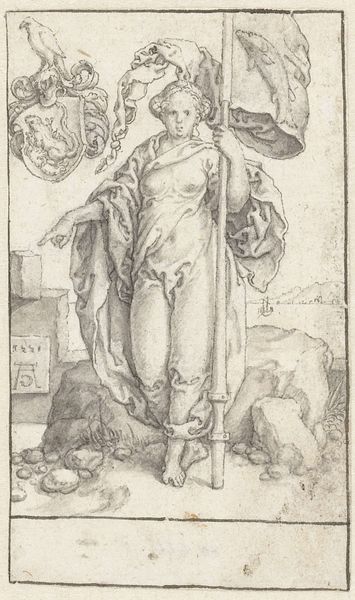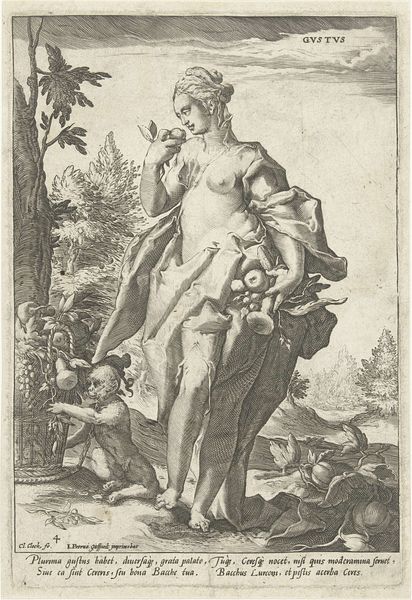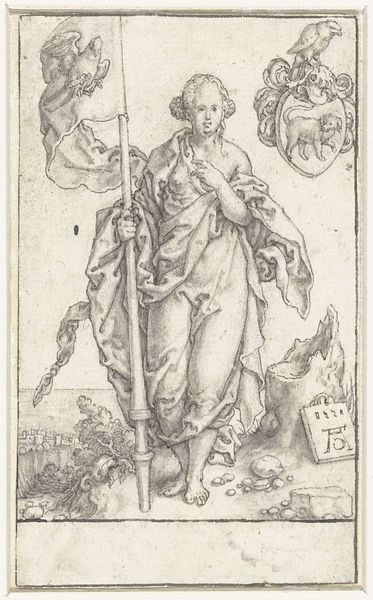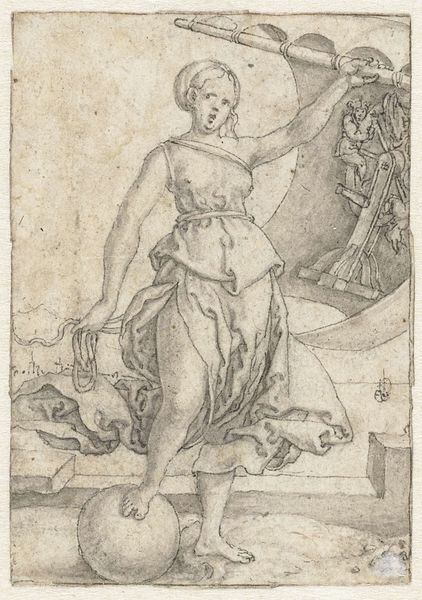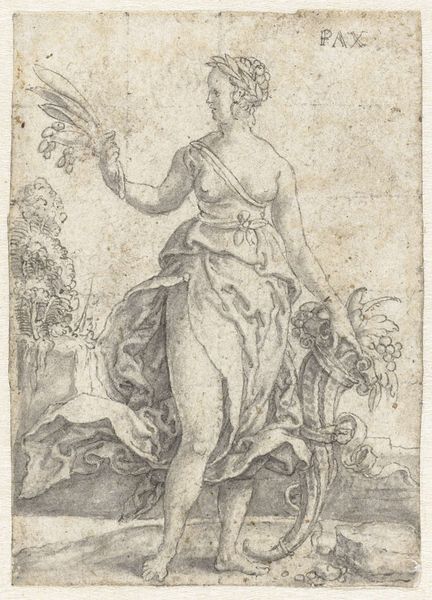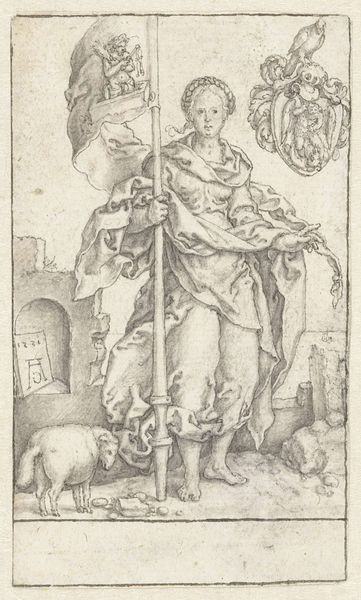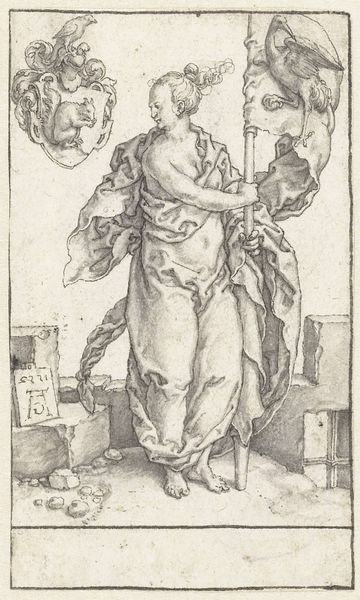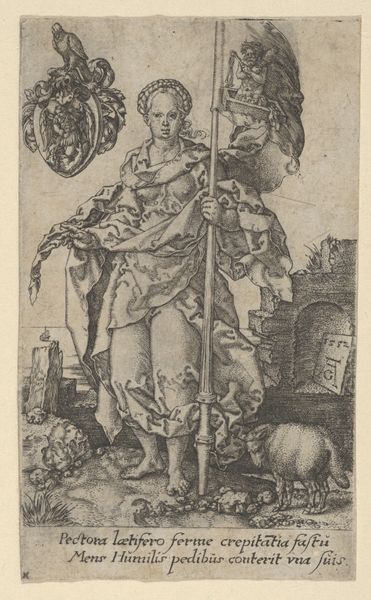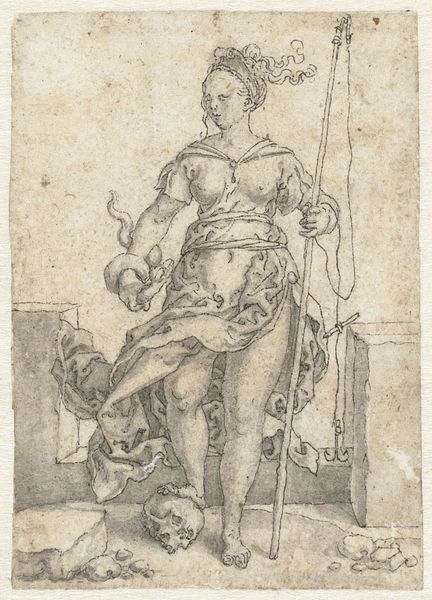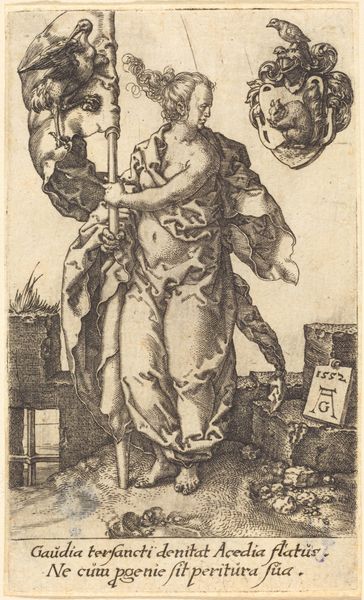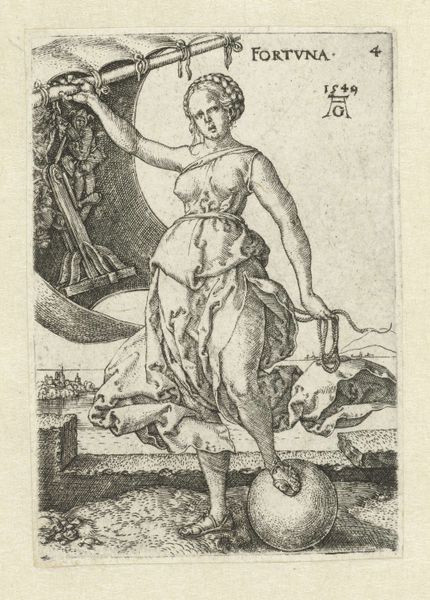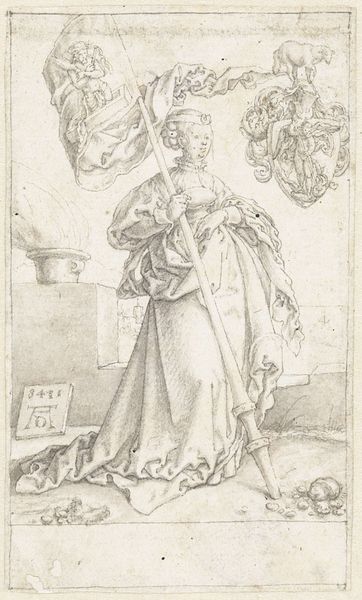
drawing, print, engraving
#
drawing
#
allegory
# print
#
figuration
#
11_renaissance
#
line
#
history-painting
#
northern-renaissance
#
engraving
Dimensions: height 105 mm, width 61 mm
Copyright: Rijks Museum: Open Domain
Curator: Here we have Heinrich Aldegrever's "Chastity," or "Kuisheid" as it's known in Dutch, created in 1551. It’s currently held in the Rijksmuseum. Editor: My first impression is one of serene strength. The woman exudes composure. The stark lines of the engraving give it a sense of purity and purpose. Curator: The technique used is engraving, a printmaking process where the design is cut into a metal plate. Aldegrever was a master printmaker, and you can see the precision in every line here. His output circulated widely, effectively disseminating humanist and Reformation ideas. Editor: Absolutely. This piece speaks to the 16th-century context, steeped in religious and social reform. I am interested in this figure as an allegory and reflection of prescribed gender roles. What commentary do you believe the piece makes? Curator: It’s a visualization of the virtue of chastity, important for social order, of course, but consider, too, that the making of the print itself is a process akin to the discipline that chastity represents—careful labor to produce a pure impression. Editor: It brings to light how ideologies are not just passively consumed, but are actively manufactured and distributed, impacting gender and sexuality perceptions. The inclusion of her symbolic accessories also plays a role, reinforcing her chaste status but potentially framing chastity as a performance or a role. Curator: Precisely. Look at how the architecture is included. Columns of established belief lie behind her; blocks are strewn and broken at her feet to imply her presence ensures purity. It implies this virtue isn’t merely about personal conduct, but the stability of society. Editor: That’s a good point. This image prompts us to reconsider our ideas about these inherited virtues as tools, but not necessarily empowering ones. Aldegrever has created an image rooted in ideals that would later shape many perceptions about gender. Curator: Considering that engravings like these were consumed in homes, we see the very active creation and recreation of these themes, disseminated directly into domestic spaces. It provides some excellent perspectives on materiality as a form of moral conviction, don't you think? Editor: Definitely. It enriches our comprehension and brings to light potential points of reinterpretation. Thank you for that! Curator: Thank you, it was a real pleasure discussing such a formative print.
Comments
No comments
Be the first to comment and join the conversation on the ultimate creative platform.
